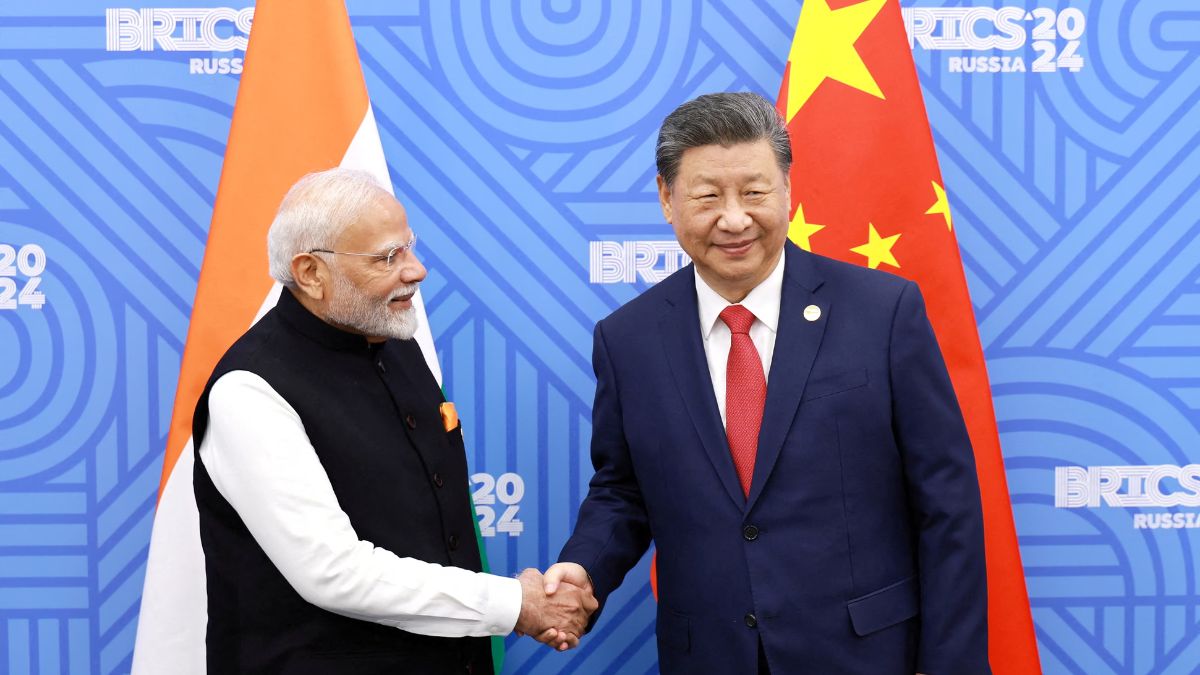India, China tread double track diplomacy in bid to warm bilateral ties

There are few coincidences in diplomacy. A flurry of high-level official visits of top Indian leaders to Beijing may carry in it the seeds of a warming in the bilateral relationship between the Asian giants India and China.
Ten days after Indian foreign secretary Vikram Misri met visiting Chinese vice-foreign minister Sun Weidong in New Delhi (on June 23), National Security Adviser Ajit Doval met with Chinese foreign minister Wang Yi in Beijing, where both sides called for an “overall development” of ties.
ALSO READ | Should Russian ally India be worried about Trump's 100 per cent secondary tariffs?
On June 27, it was Defence Minister Rajnath Singh in China, where he met his Chinese counterpart Admiral Don Jun.
On July 14, it was foreign minister S. Jaishankar who met Chinese Vice President Han Zheng in Beijing before meeting his Chinese counterpart Wang Yi in Tianjin, the venue of the Shanghai Cooperation Organisation (SCO) Foreign Ministers' Summit, before calling on Chinese President Xi Jinping on July 15.
There are niceties in return too. Wang is expected in India in July itself, ahead of Prime Minister Narendra Modi’s widely expected visit to China in September for the SCO summit.
These visits, particularly after Operation Sindoor—a four-day long military clash between India and Pakistan from May 7-11—are remarkable, because they are taking place in the backdrop of a churn in global geopolitics that has led to the emergence of new blocs.
The result is a gradual convergence of policies which dictate that complicated issues be dealt with on a different plane, while issues of mutual interest be allowed to proceed unhindered.
While calling for a “far-seeing approach” to the bilateral ties, Jaishankar’s remarks during the meeting with Wang were interesting when he said that ‘differences should not become disputes and competition should not become conflict’.
On December 18, 2024, after the Special Representatives (SR)-level talks, the two sides—led by Doval and Wang—in a statement issued by the Indian foreign ministry, had said: “The SRs reiterated the importance of maintaining a political perspective of the overall bilateral relationship while seeking a fair, reasonable and mutually acceptable framework for settlement of the boundary question, and resolved to inject more vitality into this process.”
What it means is an agreement between the two countries to look at the broader global perspective while looking at ways for a settlement of the vexed border question. In other words, a bilateral diplomacy that treads on two tracks.
There are several cushions for a better India-China relationship.
India and China have a strong economic relationship that has the potential to grow manifold. With trade talks proceeding in a positive direction, China is already among India’s biggest trading partners with bilateral trade scaling $118 billion in FY24.
ALSO READ | 'Trust rather than suspect': Chinese foreign minister urges bilateral cooperation with India at SCO Summit
India and China are already prominent members of the SCO and the BRICS groupings, which are increasing their footprint by the day.
Both countries—to some degree—agree on the need to find an alternative to the dominance of the US Dollar as the international currency of exchange.
Both countries also have a strong view against the imposition of tariffs and restrictive trade practices by the Trump administration.
However, there are issues that continue to hinder India-China ties.
The first is the undemarcated boundary issue that has been persisting for long, which even sparked off the 2020 Galwan incident.
The second is the proximate relationship between China and Pakistan for much of the last 75 years.
The third is the quantum jump that China has achieved in its economy, military, geostrategic influence, and scientific innovation, despite having begun the process of economic development at roughly the same time as India.
The outstanding problem for India is how to close this gap.
World